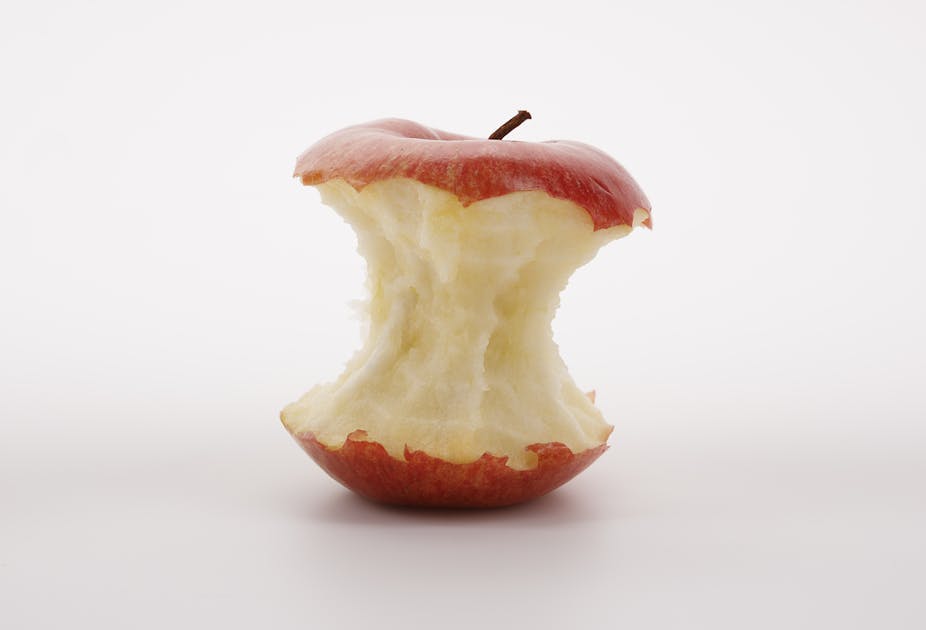Apple shareholders must be extremely happy with the company’s performance in the past 12 months. The stock price is up 111% since the end of 2018, not to mention the US$3 (£2.31) per share that the company has paid in dividends over the period. While Apple’s full-year 2019 results will not be released until later in January, it generated operating income of US$15.6 billion in the third quarter of the year. That translates to about US$60 billion a year, or about the same size as the economy of Luxembourg.
If you had invested US$100 in Apple at the beginning of 2019, you would have more than doubled your money in just one year. But we also need to look at this from the other side of the market. New investors must now pay over double the price they would have paid for Apple shares one year ago.
This depends on what I call the stupid investor theory. This states that for a short-term investor to profit from buying these shares at the start of 2019, they must be able to sell their shares to a “stupid” investor now that they have appreciated in value. This buyer will be forward-looking, probably short-termist as well, trading on the expectation that they will find a third “stupid” investor later willing to pay an even higher price.
The important thing to take away is that this cannot go on indefinitely. And as we shall see, there is a reason why it probably can’t go on for much longer at all.
Shooting stock, profits plunging
To see how long this pattern can hold, we need to assess whether Apple’s performance is sustainable. When you compare the last four quarters’ operating income – from fourth quarter 2018 to third quarter 2019 – with the previous four, you’re looking at a fall of 10%. Over the same period, the company’s revenues dropped by more than 5%. The main culprits were falling sales of iPhones, in a world saturated with smartphones, and a big tailing off in China, which is the company’s third-largest market. Growth businesses such as the Apple Watch and the app store were not enough to offset the decline.

Why then, was Apple’s stock return so high? The answer is actually very simple. In 2019, the company’s financial strategy consisted primarily of repurchasing its own shares, which had the effect of boosting the stock price artificially.
In calendar 2019, based on my estimates using information from Datastream, the company spent US$74 billion to buy 7.6% of its outstanding shares on the open market. That’s over US$300 million for each of the 250 trading days in the year. Stock repurchases have a very simple mechanical effect: fewer shares mean higher earnings per share, which drives up the per-share return, a key metric in appraising a company. In early 2014, when Apple started its large buyback programme, it had 6.3 billion shares outstanding and earnings per share (EPS) of US$5.68. By December 31 2019, EPS was US$12 on 4.5 billion outstanding shares.
Apple calls this “returning money to shareholders”. Luca Maestri, the chief financial officer, stated in the most recent financial release that in the third quarter of 2019:
We also returned over US$21 billion to shareholders, including almost US$18 billion in share repurchases and US$3.5 billion in dividends and equivalents, as we continue on our path to reaching a net cash neutral position over time.
This money was indeed transferred to shareholders, but with two caveats. First, those who sold their shares did so because they left the company or at least reduced their stakeholding – in other words, Apple is rewarding its least loyal investors by enabling them to cash out at a high price. That is a strange way of returning money to investors since it discriminates against those who are not selling. Returning money via the buyback route has the added bonus in some jurisdictions, such as the US and Switzerland, of being more tax-favourable for these investors compared to the more regular dividend route.
Apple’s shares have shot up in recent years

The second caveat is that the company is repurchasing its stock at higher and higher prices. For example, while in the last quarter of 2019 Apple repurchased 59 million shares at an average price of US$266, in the first quarter of 2018, the company bought 159 million shares at an average price of US$171. You begin to wonder if Apple is the stupid investor.
The end is nigh?
Maestri’s quote also puts a use-by date on this strategy. Apple expects to continue buying back stock until it reaches a cash neutral position. This is the moment when the company’s cash equals its debt. As of September 2019, cash holdings are US$100 billion and debt stands at US$91 billion. The company’s annual cash flow is about US$25 billion a year, which is only about a third of the money spent on repurchases in 2019. Since the gap between the existing cash holdings and debt is nowhere near enough to cover the difference, the buyback frenzy is clearly not going to continue.
What Apple needs is a focus on innovation and not on financial engineering. I argued in a Conversation article in December 2018 that the company is no longer considered a growth stock by markets. Investors only buy expensive stocks when they have high expectations that the company will continue to grow. For the company’s shareholders, the question is this: who will buy their stock if or when Apple cannot do it anymore?

